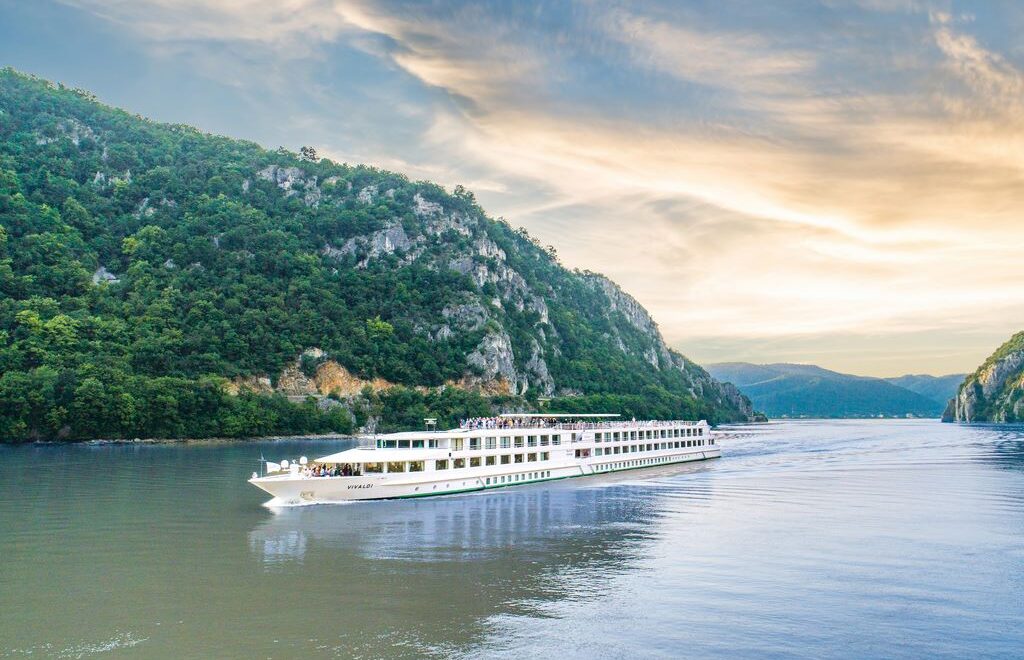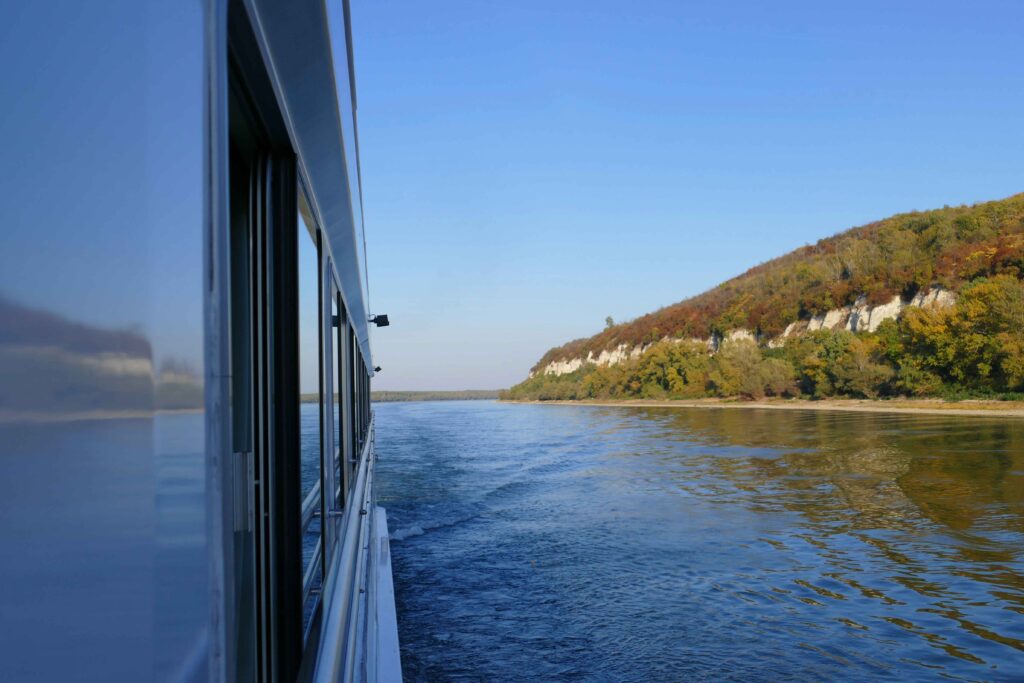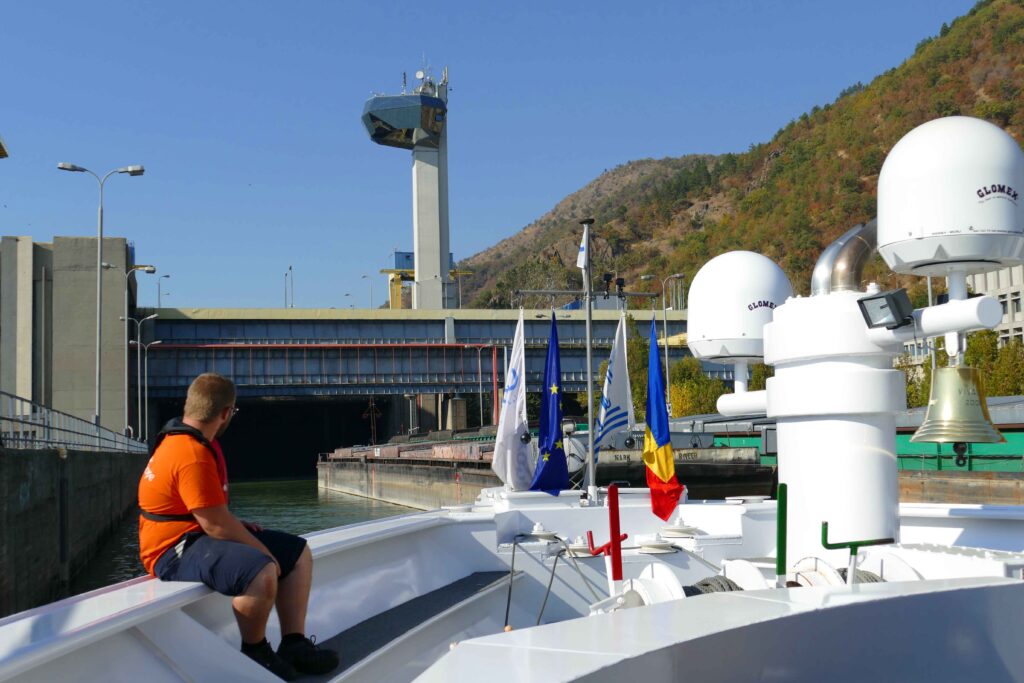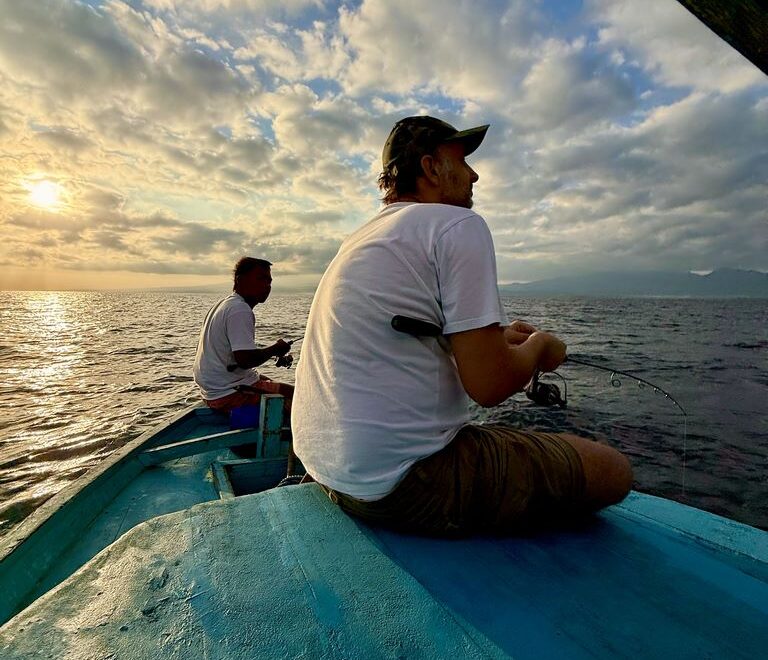
It was aboard the MS Vivaldi from the Strasbourg-based company CroisiEurope, that we sailed up the Danube from its mouth on the Black Sea to Vienna in Austria. We travelled through 8 countries (Romania, Moldavia, Bulgaria, Serbia, Hungary, Croatia, Slovakia and Austria) in Central Europe, so often shattered by conflict, and discovered 4 capital cities (Bucharest, Belgrade, Budapest and Vienna) on the banks of this magnificent river.
The second part of this cruise, described here, takes us from the Bulgarian town of Svishtov to the Austrian capital, passing through the famous parade of the Iron doors "With its imposing structures and landscapes.
The Vivaldi has covered 484 km since leaving the Romanian town of Tulcea, our embarkation point at the entrance to the Danube delta (see report on the first part of the journey ). Once the excursion to Roussé was over, we met up with the boat again in Svishtov, a Bulgarian town located at the southernmost point of the Danube (about the same latitude as St Tropez on the Côte d'Azur). All we'll see are the port facilities, bristling with cranes busy removing silt. From Svishtov, we set off again for an afternoon and a night's sailing towards Vienna (Austria).
Trees and bears...

From Svishtov to Vidin (Bulgaria), the moesic plateau (1) borders the river with high cliffs on its southern bank. The banks are very high in places, with clay banks up to 3m high. Following the spring floods, the shoreline is littered with tree trunks, deposited loose by the force of the current, and cluttered with a few shipwrecks. Herons frolic in the sunshine as our vessel ploughs through the seemingly calm waters. The curtain of chalky cliffs gives way here and there to vast marshy areas.
On the left bank (Romania), forests of willow, ash and poplar form an opaque screen against which the eye stumbles. Romania has the largest area of primary forest in Europe, but it is threatened by climate change and deforestation. On the other hand, global warming is encouraging the reproduction of brown bears, of which Romania - and the Carpathians - are home to many specimens. Nicolae Ceausescu reserved the right to hunt bears in the area, thereby protecting the species. Today, the animal is moving ever closer to the villages, which is beginning to worry the locals. Wind turbines tower over small villages clinging to the hills.
It's time to meet up on deck for a game of cards, a reading break or a spot of sunbathing. A small group has formed to play Scrabble, while other passengers join the gentle gymnastics session. Today's excursion has been moved to the afternoon. After dinner, a lively evening awaits us in the lounge-bar, with Fabian Lazlo on piano synthesiser.

During the night, we will pass under the New Europe Bridge, which links the small Romanian town of Calafat to Vidin, a cable-stayed road and rail bridge some 2 km long. Built by a Spanish company and inaugurated in 2013, this is the 2nd bridge to link the 2 countries. A 3rd bridge, between Svishtov and Zimnicea, is planned.
Djerdap II and Djerdap I
The 5th day of the cruise was totally dedicated to navigation. Early in the morning, we passed through the Djerdap II lock (310 m x 34 m). Djerdap is the Serbian name for the gorge we are about to pass through, also known as the 'Iron Gates' gorge (2). The first name comes from a Persian word meaning whirlpool, as the current was so strong at this point. The second is thought to refer to a large iron chain that impeded river traffic at the border between the Austro-Hungarian and Ottoman Empires, in order to enable the Emperor of Austria-Hungary to collect customs duties.
We are entering the Danube Gorge, where the river separates the Romanian Carpathians to the north from the Balkans to the south (Serbia). Its width varies from 2 km to less than 150 m at its narrowest. This is undoubtedly the most impressive and beautiful part of our journey. We will sail some 80 km to reach the second dam: Djerdap I. These dams are jointly operated by Romania and Serbia.
The landscape is the result of the submergence of the riverbanks by the reservoirs of the 2 dams, particularly by the Djerdap I reservoir, the largest. The pharaonic construction of the Djerdap I hydroelectric and navigation system, which lasted from 1964 to 1972, displaced thousands of Romanian and Yugoslav villagers and swallowed up precious archaeological remains, but navigation and the economy benefited. In the past, this feisty stretch of the Danube, with its waterfalls, whirlpools and shoals, was greatly feared by sailors. It took almost 4 days to cross this passage, compared with a maximum of a dozen hours today.
The waters are a dense steel grey, dominated by a threatening wall of black rock. There's nothing else to do but observe and let ourselves be lulled by the river's successive sinuosities, which the merchant ships seem to struggle to navigate upstream, proof of the muted force of the flow. We skirt the shores of Romania (left bank) and Serbia (right bank), watching barges and a few cruise ships go by. This stretch, to which many legends are attached, is strikingly beautiful.
And finally, in the afternoon, the giant Djerdap I dam. This is one of the largest hydroelectric plants in Europe. The average flow of the river here is 5,000 m3/s," we are told on board. The engineers have taken account of the river's variable flow by designing a spillway capable of absorbing floods, which can be very high in spring or summer.
Entering the Djerdap I lock
Two commercial boats are waiting to lock through. Most of the passengers were on deck, enjoying the manoeuvres and the warm sunshine. But once in the lock chamber, we had to deal with a breakdown. It took the lock technicians almost 3 hours to unblock the upstream gates and extricate us from this unexpected trap. Under normal circumstances, it takes just over an hour for a boat to pass through the Djerdap I lock, with its 34 metre drop. But the unexpected spices up any journey! The fact remains that we're behind schedule. Nevertheless, we hope to discover the statue of Decébale before nightfall.
The "Iron Gates" parade and Decébale, the Resistance fighter

Along the defile, narrow gorges alternate with wider pools. The landscape of mountains and cliffs is illuminated by the fading sun.
The captain pushed the engines. Passengers will finally be able to admire the statue of Decree before nightfall. This last king of Dacia (modern-day Romania) rose up against the Roman invasion, but had to bow to the emperor Trajan and took his own life in 106 AD. Still venerated today, he is not the only one to have defended freedom. Remember that the Danube swallowed up thousands of lives during the 25 years (1965-1989) of the Ceausescu dictatorship: many Romanians attempted to cross the icy waters to reach Tito's former Yugoslavia, which represented the free world. "Those who decided to escape by swimming across the Danube would stick their identity documents to their bodies in a plastic bag"., reports Le courrier des Balkans (3).

The first thing we see is Trajan's Table, a marble slab that was raised to escape the flooding of the dams. To save it, the slab was cut away along with all the surrounding rock and reinstalled some fifty metres higher. The inscription, which is still clearly legible, states that in 103 AD the Roman emperor braved the dangers to open a new road, which is now submerged.
Then, on the Romanian side of the river, the head of Decébale, a sculpture carved in stone into the cliffside by mountaineering artists, inaugurated in 2004. Finally, we admire the small Orthodox church of Mraconia, built on a rocky promontory.
It's already dark. Beatrix Pinter, the purser, invites the passengers to an aperitif. This is followed by the traditional sauerkraut dinner, accompanied by a glass of Alsace wine, a nod to our company's Strasbourg roots. There's nothing like it to settle stomachs and loosen tongues. The evening turns to dancing, with a fine performance by a group of folk dancers.
Belgrade, the Serbian soul
Sixth day of cruising. Our boat continued its night sail before docking in Belgrade (Serbia) (5). An excursion will take us to the Kalemegdan fortress, the city's cultural and historical landmark, which was reduced to rubble and then rebuilt several times. The Celts founded it, the Romans fortified it, then the Byzantines, Hungarians, Serbian kings, Turks and Austro-Hungarians fought for its capture for centuries.
In this immense park overlooking the Danube and its confluence with the Sava, the fortifications are home to an exhibition of military equipment used during the Second World War, as well as a number of monuments to Serbia's turbulent history. These include the "gratitude to France" monument dedicated to the 1914-1918 war, the work of the world-famous Croatian sculptor Ivan Meštrović.
The highlight of your visit to Belgrade is the cathedral Saint-Savainspired by Saint Sophia in Constantinople, as it was in the time of the emperor. Justinianwithout the minarets. Dedicated to the founder of the Serbian Orthodox Church, Saint Sava of Serbia (c. 1169 - 14 January 1236), the first archbishop of Petch. Saint Sava's cathedral was built on the site where the saint's relics were burnt. Construction began in 1939, but was soon interrupted by the German occupation in 1941, and was not resumed until 2001. The crypt was recently completed. Unreal in its beauty, magnificently decorated with gold leaf, mosaics, murals, icons and Carrara marble, the church reflects the revival of Serbian spirituality.

End of cruise
We'll be leaving the boat as soon as we arrive in Vienna, in the early hours of the morning. The 3 days we'll spend on board to reach the Austrian capital will offer us some beautiful autumnal light and some marvellous sailing moments, like this flight of wild ducks in front of the bow of the Vivaldi between Mohacs and Kalocsa. Not forgetting, of course, visits to Vojvodina (a multi-ethnic province in northern Serbia) and its pretty capital Novi Sad (4). We'll need another day to visit the Austrian capital before our return.
Cruise on the MS Vivaldi
The MS Vivaldi is a superb 5-anchor yacht on a human scale, measuring 110 metres long and 11.40 metres wide. She can accommodate 176 passengers in 88 cabins on three decks. Each cabin, ranging in size from 9 to 13 m2, has all the amenities and offers the best possible living conditions. The décor is meticulous and the atmosphere both elegant and friendly. The kitchen is generous and of excellent quality. On the same deck is the lounge-bar with dance floor, while a piano-bar welcomes cruisers on the upper deck, in a warm and intimate atmosphere.
CroisiEurope offers a number of cruises on the Danube. See https://www.croisieurope.com/croisiere/mer-noire-danube-bleu-formule-portport-classique
Read more : Sur la route du Danube, Emmanuel Ruben, éditions Payot-Rivages, 2019. https://www.payot-rivages.fr/rivages/livre/sur-la-route-du-danube-9782743646486
(1) Mesia or Moesia was an ancient province of the Roman Empire, stretching from the Danube to the Balkans.
(2) The "Iron Gates" sector extends from Vince to Kostol, on the right bank, and from Moldova Veche to Turnu-Severin, on the left bank of the Danube (source: Danube Commission).
(3) Article by Marina Constantinoiu and Istvan Deak translated by Mandi Gueguen published on 10 October 2016 (www.courrierdesbalkans.fr)
(4) We described this part of the journey in the following article https://universvoyage.com/danube-de-budapest-aux-portes-de-fer/
(5) See article https://universvoyage.com/danube-de-budapest-aux-portes-de-fer/
Text and Photos : Brigitte Postel unless otherwise stated















